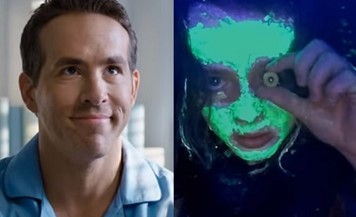Movies talk to each other. What did the films of 2021 have to say? This is a look at how two movies from the past year tackle similar subjects in different ways. Be warned, SPOILERS for Free Guy and We’re All Going To The World’s Fair follow.
Over the past two years, being online has become increasingly important to watching movies. The actual act of watching, at least — with streaming gaining ground even before the pandemic shuttered movie theaters and reduced their capacities. If a film doesn’t exist in code, it barely exists at all. But it still seems like “being online,” as a way of life for the people in those movies (and a concept recognizable to our own experiences of online life), isn’t really depicted in those films zipping from those Netflix and HBO and Apple to our screens. What is it like to be, to live online? What do you find there?
Free Guy was written as a spec script by Matt Lieberman and was not expected to perform particularly well; it wound up making $330 million worldwide and was the only non-franchise non-sequel movie in the U.S. box office top 10. An original movie! About a relatively original subject, an NPC in an MMO (which takes quite a few cues, mayhem-wise, from Grand Theft Auto) gaining self-determination, realizing that he is in a game, and trying to change his life. Well, relatively original — reviewers were quick to evoke The Truman Show and The Matrix as similar tales of free will facing off against the maintainers of constructed worlds. But my mind went somewhere else. Lieberman’s original story got a screenplay co-write from Zak Penn, a guy who has been involved with many franchise blockbusters and who got his start in Hollywood co-creating the story for a notorious bomb, Last Action Hero. It’s a flawed movie, but I am a fan of its metafictional collision and examination of what it means for a “real” person to fall into a movie and for a movie character to realize there’s a “real” world out there. What could Free Guy show about the even more porous boundary between online gaming and “real” life?

The protagonist of Last Action Hero enters the world of his favorite movie via a much-mocked magic ticket. It’s tossed-off nonsense that is a sappy metaphor but has the decency to do its job and then largely get out of the way. Ryan Reynolds’ Guy, a cheery dipshit bank teller in the world of Free City, gains the ability to act off the game’s script because he hears a character managed by Jodie Comer’s gamer Millie singing a Mariah Carey tune as she walks by. This is ultimately revealed to be much, much greater bullshit than any magic ticket — Millie’s former game design partner Walter (Joe Keery, whose candy-assedness pushes past beta male into omega territory) coded her favorite song, ice cream flavor, etc. into game characters as a kind of love letter, and the love connection here pushes Guy to a kind of sentience.
Once he gains a pair of sunglasses worn by actual gamers that let him see the world as it is, he forgoes the bank robberies and car thefts that are part of the game’s playthrough and levels up through acts of kindness and violence prevention. His Casper the Friendly Ghost in the Machine act draws worldwide attention and speaking of life colliding with art, numerous videogame streamers play themselves here, I hope they got paid. All this publicity first pleases and then annoys evil game developer Antwan (Taika Waititi, attempting to get the death penalty for criminal mugging), who stole Millie’s code to make Free City and is now preparing to shut down the original and release a new version, destroying Guy and all his awakening NPC pals.

The whole business of how those NPCs realize their existence and just how much autonomy they had in the first place (some are shown following very limited scripts, others like Guy and his buddy (sigh) Buddy can hold conversations about new developments even before Guy gets free will) and how the non-Mariah Carey listeners are awakening is sloppy and it’s part of sloppy, if nice, thinking. These beings appear to have consciousness, we shouldn’t let an unfunny asshole kill them. But it’s that corny as shit code-as-love-letter that points to the larger problem here. That dopey magic ticket isn’t the point of Last Action Hero, the point is the relationship between viewer and character and the film digs into how that is unstable and at times cruel. Here life is created out of suppressed wienery love and instead of being thorny, it’s boring. There’s no real chance for Guy to have a relationship with Millie, no real sense that these worlds are interacting and affecting each other (indeed, the nerds learn the lesson to spend more time in meatspace, you nerds).
A decent chunk of Free Guy was filmed in Boston and you can tell if you know what you’re looking for. The filmmakers used yuppie-ish areas downtown for their coffee shops and banks and nice neighborhoods and then added special effects to transform the area into an EveryCity setting. It’s convincing as a setting for a video game but it’s unpleasant and again, boring, to see a place I know smoothed out that way. The movie toggles between the “real” world and the one Guy exists in and director Shawn Levy has talked about differentiating the latter from the former using everything “from colors to lenses to composition to framing, to the format of the cameras and the style of camera movement.” I guess there’s some differences but it’s not exactly Cool World. Free City is heightened, sure, but no more than any other PG-13 fantasy of largely bloodless action and sexless attraction. And in making online look like just another depersonalized movie, it creates its own uncanny valley, where the alleged reality of Guy’s online existence is undermined by the visual signifiers of fantasy.
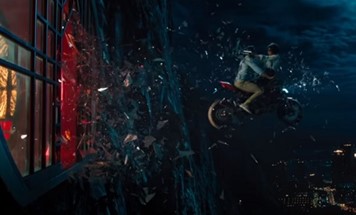
What’s odd is when this gets undermined, however briefly. The viewer of Free Guy almost always sees the world of Free City as Guy does, not as the people playing the game on their monitors do – everyone in the game looks like “real” people. But at one point Guy is fighting a muscular doppelganger and we see it on a screen, high-resolution but still obviously pixelated avatars pummeling each other. And this, not any of the other action in the film, is what made me wince — in the same way I would watching a character take a punch combo in a fighting game, perhaps, but with a real connection to the depiction of pain I was seeing. The movie spends two hours arguing that an online simulacrum is real, and I only believed it when it was most obviously fake.
At the beginning of We’re All Going To The World’s Fair, a teenager named Casey watches videos online. They’re testimonials from people who have taken the World’s Fair Challenge, which appears to be some kind of creepypasta rabbit hole of footage and text. One young man cuts his arms open and something that is not blood comes out. This is an internet video, the most fakeable and faked thing in the known universe and yet … what if it’s real? It was real enough to get under my skin, because there’s something about watching a person on the other end of the internet putting a version of themselves out there for you to see, wanting your reaction. And it gets under Casey’s skin as well. She accepts the challenge and speaks the game’s Candyman-ish challenge of a mantra, ready to take on the transformations and terrors the game promises.
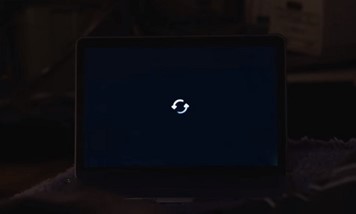
The explicit horror flicks Unfriended and Unfriended 2: Dark Web brilliantly restrict themselves to footage that is almost entirely online, entirely computerized and indeed on one monitor — personal webcams, shared screens, surveillance footage, etc. in various windows — as a way of immersing the viewer in dark and intangible digital forces that can still spill blood in the real world. Despite the Slendermany feel of the game here, World’s Fair director Jane Schoenbrun is not making a straight horror film and in fact they share a tactic with Levy, making sure that the online world and real world are distinct. Much of the movie is indeed seen through Casey’s webcam, or through videos she takes on her phone. But we see a world shot by a camera not mediated by her as well, one that seems to have angry and potentially dangerous relatives and an empty barn that is also a refuge. And this world has a middle-aged guy named JLB, who lives in a nice big house with a nice big computer setup and a disapproving woman in the background. The real world exists, Schoenbrun seems to be saying — this is not going to be some kind of “all in her MIIIIND” head trip for Casey — but it is denied for what can be found online, the connections that are possible there. JLB reaches out to Casey and says he likes the reaction videos she’s making as part of the game. And he says she’s in danger.
Now, the immediate reaction from pretty much anyone with online experience to that is to assume that the person putting Casey in danger is JLB. He is concerned, coaxing, at times withholding. He says he knows the game and that he can help. From what we see of his workspace, he does have a lot of research and tabs and texts about the World’s Fair, real Pepe Sylvia shit, but he also has a script he seems to consult at times. Whereas Casey just has herself and her confusion, her confessions to the camera about how she’s behaving strangely now. She uploads footage of her sleeping and then thrashing in terror, she paints her face and tears apart her childhood stuffed animal. She looks at the camera on her computer and is seen by JLB, but can never see him.
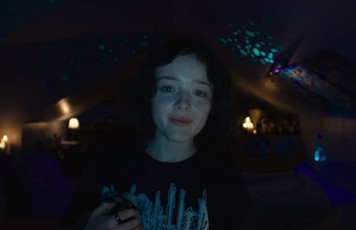
What takes a while to emerge is the scope of the need here and how it is being filled. Michael Rogers’ JLB is a lonely person who if nothing else has forsaken his real-world comforts and relationships to obsess over this game and — right now — this particular person playing it. So despite his power, he needs her, and there is real pathos in their interactions as they play the game. Casey, played by the remarkable Anna Cobb, has a home and a bed and a computer, but does not seem to have much else in her life, no friends, no other hobbies, no social structure (certainly no school is shown). Her need is from the internet and to it, getting validation for her videos but also putting them out there. And after a while, questions arise. Is all of this just Casey playing the game? Is it really real? Is it both? What is she getting out of this?
About a third of the way through the movie, Schoenbrun pulls back outside of Casey’s self-directed camera and follows her to a rec room in the middle of the night, laptop in tow. Casey hooks this up to a projector and pulls up Slight Sounds, a YouTuber who produces ASMR videos, and then watches this woman, the camera as close to her face as Casey’s is to hers in her own videos, whispering a calming mantra over and over for what feels like ten minutes. It is a soothing video that brings Casey peace and it made me want to set myself on fire with anxiety and discomfort. Part of that was the setup — Schoenbrun knows a scene like this in a movie that is about a creepy online game surely appears to be a bait and switch, a way for our protagonist to be terrified (perhaps by the unseen creeper also lurking online), and the tension was certainly part of what got to me. But everything about the video — the softness, the repetition, the immersive tones that are supposed to relax — was wrong; ASMR is supposed to produce a tingling on the back of the neck and this was like sandpaper on my spine. Slight Sounds is real and quite popular, from what I can tell. Like Casey, the artist is a young woman staring out into the internet and making videos. I suspect JLB of ill intent but I am much more like him than I am Casey. We are both on the other end of a screen watching people who can’t watch us back, disturbed by what we see and not understanding how what is being done might not be for us.
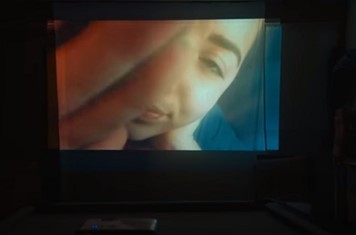
I’ve been describing World’s Fair in terms of identity on the internet but there is a much larger aspect to it that went over my head, possibly because I keep it down too much. Schoenbrun is nonbinary and has discussed the movie specifically as a trans film, drawing from their personal experience of dysphoria and interacting with others online. This excellent interview with Juan Barquin digs into these issues far better than I could; I’m trying to avoid the “I don’t see color” response of avoidance Schoenbrun describes there and see more clearly what’s on the screen and my reaction to it. If Casey’s identity crisis and the ways she explores it and deals with her pain makes me uncomfortable, that’s something I need to dig into. In any case, it’s more of a reaction than Guy’s own crisis of consciousness provokes.
There is a nice moment of praxis toward the end of Free Guy where our hero, after engaging in futile fisticuffs with that doppelganger (named Dude, of course), neuters the attack by giving his enemy that pair of sunglasses that allows him to truly see the world, bringing him up to Guy’s level instead of punching him down. But a sour action before is what lingers — on the ropes in his fight, Guy acquires some magical cross-promotional loot, a Captain America (tm!) shield and Incredible Hulk (T!M!) hands and uses them to get back on top. A moment of triumph brought to you by the Disney corporation, because even this original world can’t imagine an online presence free of the Mouse. This leads to the happy ending, where Millie and Nerdboy save Guy and all the other Free City occupants and create Free Life, an open-world space for all of these newly-aware beings. “We have the freedom to do whatever we want!” Guy says — but isn’t this the same freedom all those gamers had in Free City, when they were functionally immortal and had endless free time, just like these now-sentient characters? The freedom they used to smash everything and everyone they could, because that is fun as shit to do? I doubt the beings living in Free Life will avoid the same impulses as their flesh and blood creators. Who are still checking in on their creations, because Free Life is still technically a game. Here the “players” apparently passively watch nice characters do nice things (for the time being), and it is massively popular. Potentially deep questions of how we act and interact online are answered with corporate swag and the creation of Ted Lasso.
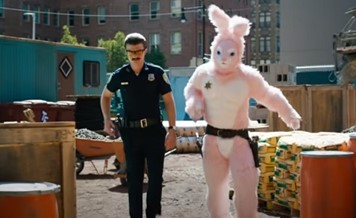
The final showdown of World’s Fair does not lead to a happy resolution. Casey and JLB confront each other online, her on video and him still hidden from view, and Casey finally cuts him loose, telling him she will vanish from his life without a trace. This isn’t even her real name, she shouts, before signing off for good. An internet video is the most fakeable and most faked thing in the universe. But is Casey — “Casey” — lying here? JLB gets the last word and says no. In an online update of his own, he says that he and Casey met some time later, as adults, out in New York City. They talked about what they meant to each other and resolved their differences and went their separate ways. He says.
It is an ambiguous ending and maybe some people read it as happy, to me JLB is unquestionably full of shit. We’ve already seen him write out scenarios for his online interactions and this feels like another one of his scripts, where he can rewrite himself as the hero. It may seem odd to end the movie this way, where Casey can’t counter him, but that is the point — she doesn’t need to. She is somewhere else and I don’t think that place is offline, which JLB — and Free Guy — parochially see as the “real” world. The internet is a big place and a person can be and become many things there. And maybe they can leave behind what they no longer need to be.

